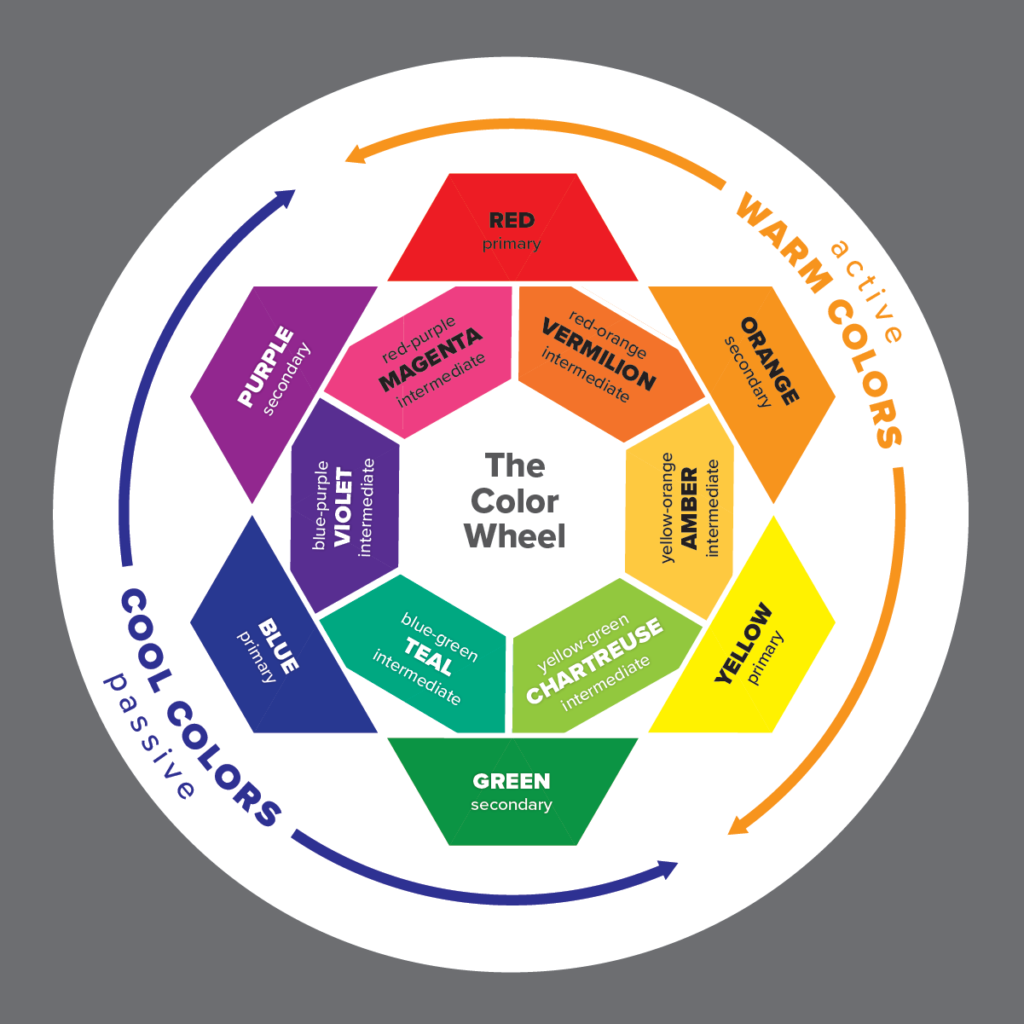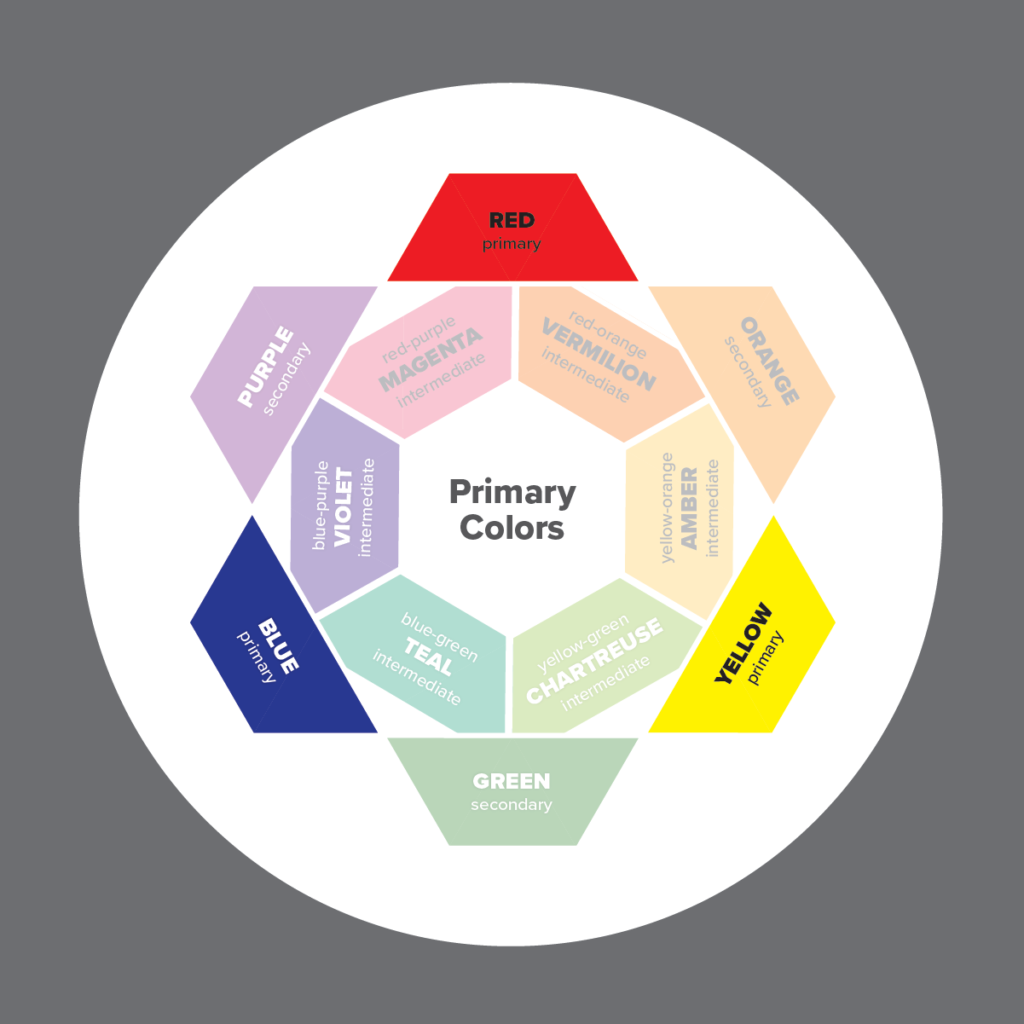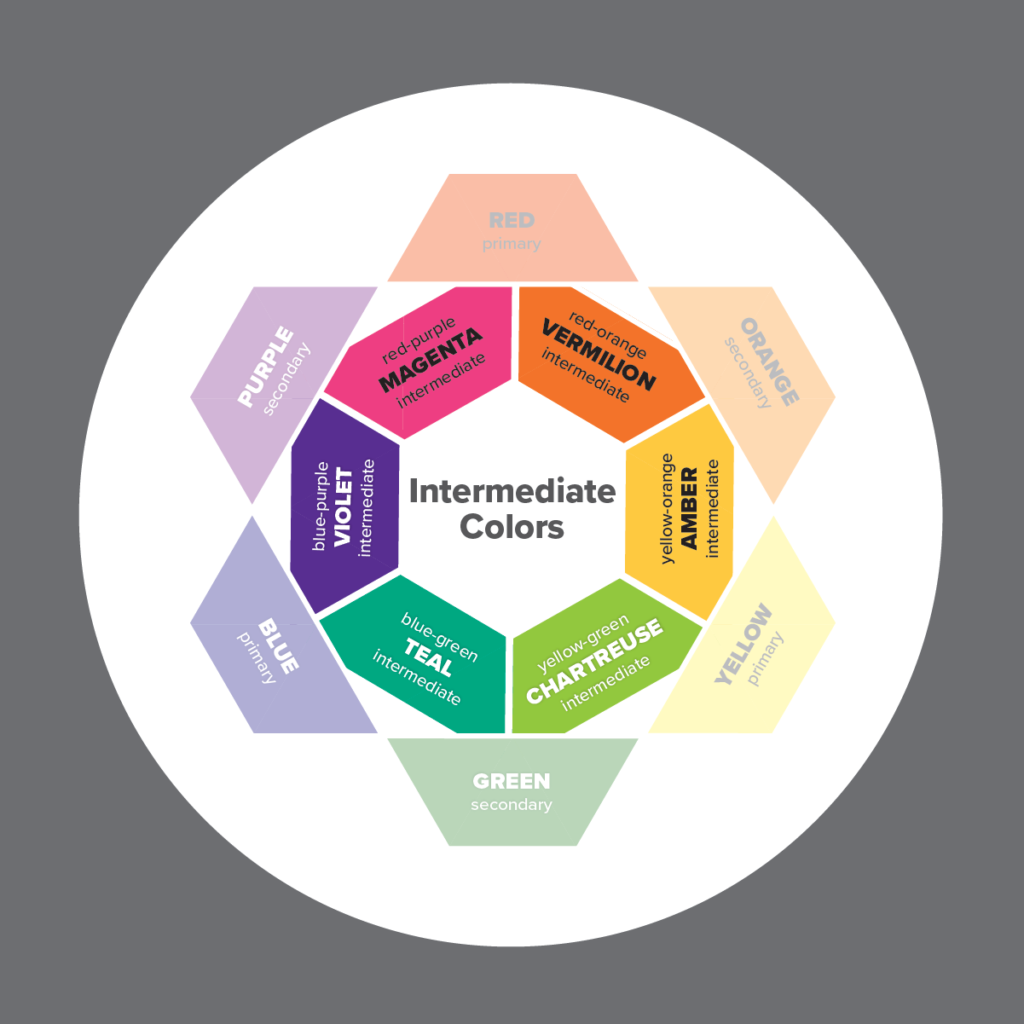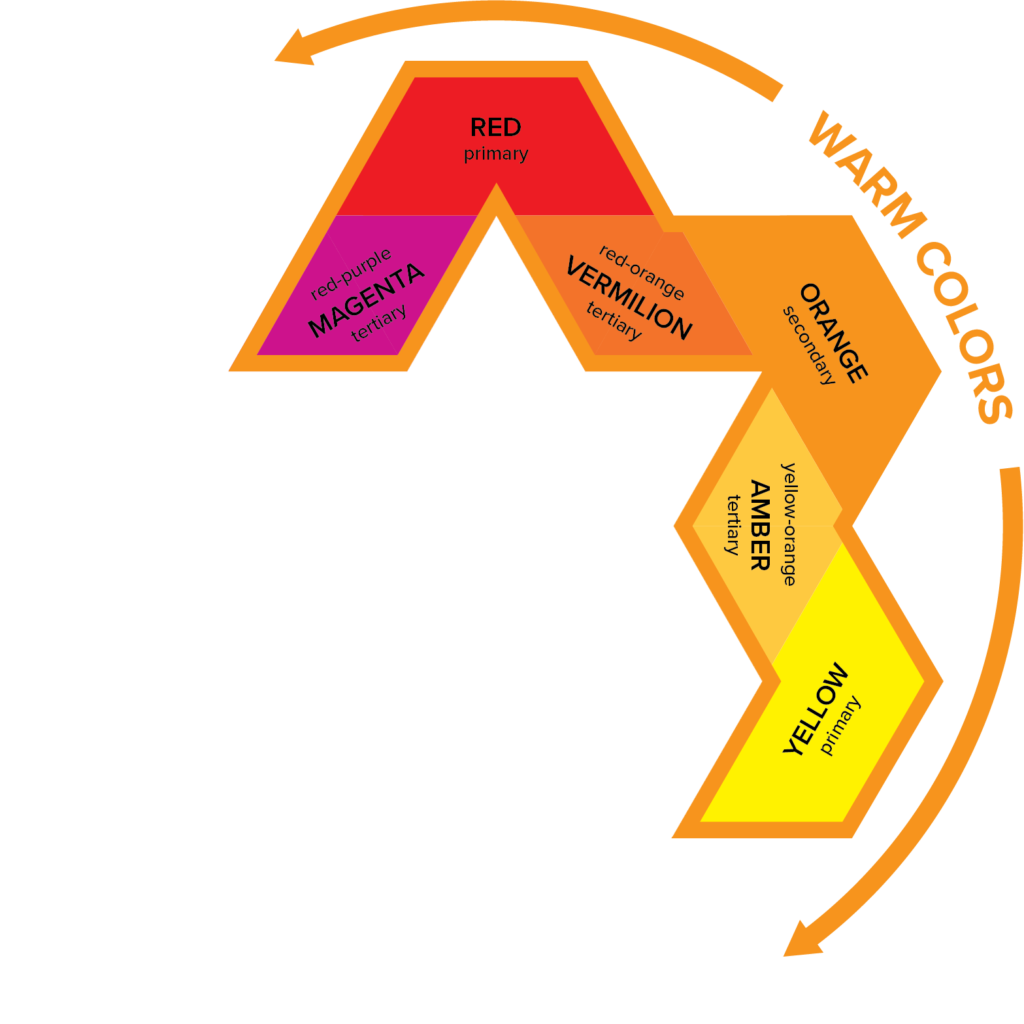
© 2021 Janie Owen-Bugh
The first step in understanding color theory is understanding the color wheel. You remember the color wheel from elementary school art class, I’m sure. The color wheel was actually introduced in the 17th century by Sir Isaac Newton, a mathematician, but mixing pigments has been around for more than 40,000 years. Newton, just made it easier on us.
So, let’s break it down…
Primary Colors
Red, Yellow, and Blue are primary colors, which means any color can be mixed with these three colors plus Black and White.

© 2021 Janie Owen-Bugh
Secondary Colors
These colors are made from mixing equal parts of each neighboring primary color. So, Red and Blue make Purple, Blue and Yellow make Green, Yellow and Red make Orange.

© 2021 Janie Owen-Bugh
Intermediate Colors
And finally, intermediate colors are made by mixing equal parts of one neighboring primary color and one neighboring secondary color. The official name is a hyphenated version of each of these colors with the primary being first… Red-Purple (Magenta), Red-Orange (Vermillion), Yellow-Orange (Amber), Yellow-Green (Chartreuse), Blue-Green (Teal), and Blue-Purple (Violet). There are variations on the nicknames, but you get the idea.

© 2021 Janie Owen-Bugh
Warm Colors

© 2021 Janie Owen-Bugh
Cool Colors

© 2021 Janie Owen-Bugh
So, that’s the color wheel. Pretty simple, huh? Next time we’ll talk about Color Schemes.

